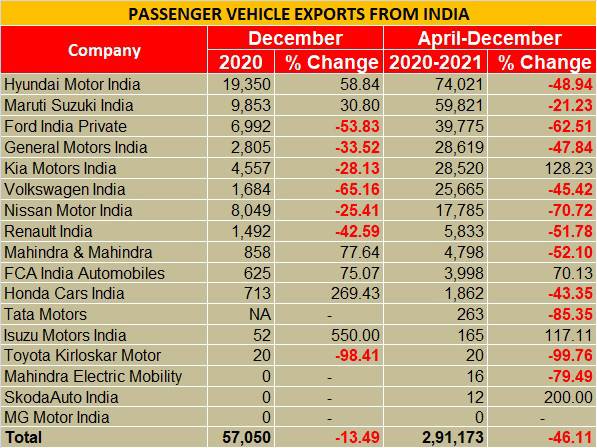VW employees in Wolfsburg Restarting the auto industry after a shutdown is extremely time-consuming and time-consuming. (Photo: dpa) Munich, Düsseldorf The automotive industry is alarmed in two ways these days. On the one hand, industry heavyweights such as Volkswagen and Daimler have to cut back their production due to the global shortage of microchips and… Continue reading German Handelsblatt: VW, Daimler and Co .: Shortage of chips and impending shutdown: The auto industry is fighting on two fronts001126
Tag: Renault
Autocar confidential: Rimac talks EVs, Renault’s sustainable re-factory and more
In this week’s round-up of automotive gossip, we get Mate Rimac’s unfiltered take on the differences between EV hypercars, explore how Renault is refurbishing its Flins factory and more. Rimac talks EVs Mate Rimac, boss of the Rimac EV technology firm, is brutally honest about how he sees electric hypercars differentiating themselves from rivals. “I… Continue reading Autocar confidential: Rimac talks EVs, Renault’s sustainable re-factory and more
@Nissan: Nissan is the UK’s most popular electric car and commercial vehicle brand000178
2021/01/18 Nissan is the biggest selling electric vehicle (EV) brand to offer both cars and commercial vehicles, the biggest supplier of e-LCV and second overall in the 2020 UK EV league, with 10,674 registrations Nissan e-NV200 is the UK’s best-selling electric commercial vehicle New £249/mth PCP offer in January makes LEAF a desirable and accessible… Continue reading @Nissan: Nissan is the UK’s most popular electric car and commercial vehicle brand000178
German Manager Magazin: Renault: Luca de Meo’s strategy should lead away from mass thinking, but in the case of electric cars, belligerent with Renault 5-Comeback000479
The French automakerRenaultwants to find its way back on the road to success with a sharper savings system and the conversion to a software-driven technology group. The new CEO Luca de Meo (53) explained on Thursday his restructuring program with the name “Renaulution”, with which he wants to increase the profitability of the troubled group… Continue reading German Manager Magazin: Renault: Luca de Meo’s strategy should lead away from mass thinking, but in the case of electric cars, belligerent with Renault 5-Comeback000479
Exclusive: Southeast Asia’s Grab considering U.S. IPO this year – sources
By Anshuman Daga 2 Min Read FILE PHOTO: A Grab vehicle is pictured in Singapore March 26, 2018. REUTERS/Edgar Su/File Photo SINGAPORE (Reuters) – Southeast Asian ride-hailing and food delivery giant Grab is exploring a listing in the United States this year, encouraged by robust investor appetite for IPOs, three sources familiar with the matter… Continue reading Exclusive: Southeast Asia’s Grab considering U.S. IPO this year – sources
FCA and PSA merge to make world’s fourth biggest car firm
The planned merger between Fiat Chrysler Automobiles (FCA) and the PSA Group has been officially completed, creating a new industry giant called Stellantis. The new company takes its name from the Latin ‘Stello’, meaning ‘to brighten with stars’. Set to produce about eight million vehicles a year, with promised revenues of over £150 billion, Stellantis… Continue reading FCA and PSA merge to make world’s fourth biggest car firm
Tesla strengthens its network in France
Posted on Jan 16, 2021, 11:19 AM And 18. Tesla will inaugurate, at the end of this first quarter, three new branches in France – in Chambéry, Mulhouse and Montpellier – which will be added to the already existing network. After the recent openings of Lille and Strasbourg, the manufacturer of electric vehicles is gaining… Continue reading Tesla strengthens its network in France
Renault to produce 7m cars with Nissan and Mitsubishi: Chairman
PARIS — French automaker Renault is beefing up its collaborative efforts with Japan’s Nissan Motor and Mitsubishi Motors, with the three-way alliance planning to share the production of major components. Renault unveiled a midterm strategic plan on Thursday that stresses manufacturing cooperation as well as production cost reductions as it scales back factories. The French… Continue reading Renault to produce 7m cars with Nissan and Mitsubishi: Chairman
Hyundai India steams ahead in exports in first nine months of FY2021
Hyundai Motor India, which wrested the No. 1 made-in-India passenger vehicle (PV) exporter title from Ford India in FY2020, is set to retain the title in FY2021. In FY2019, the Korean carmaker missed being India’s top PV exporter in FY2019 by a whisker – of all 696 units! Ford India had first unseated Hyundai, the longstanding PV export… Continue reading Hyundai India steams ahead in exports in first nine months of FY2021
@Renault: New entry trims for the LADA XRAY Cross000158
LADA announces the start of sales of new three trims for the XRAY Cross. Now the initial versions such as Classic, Classic with the Optima package and Comfort with a manual transmission will go in combination with the 1.6 l engine (106 hp). Thus, the starting price for the XRAY Coss has decreased and starts… Continue reading @Renault: New entry trims for the LADA XRAY Cross000158
